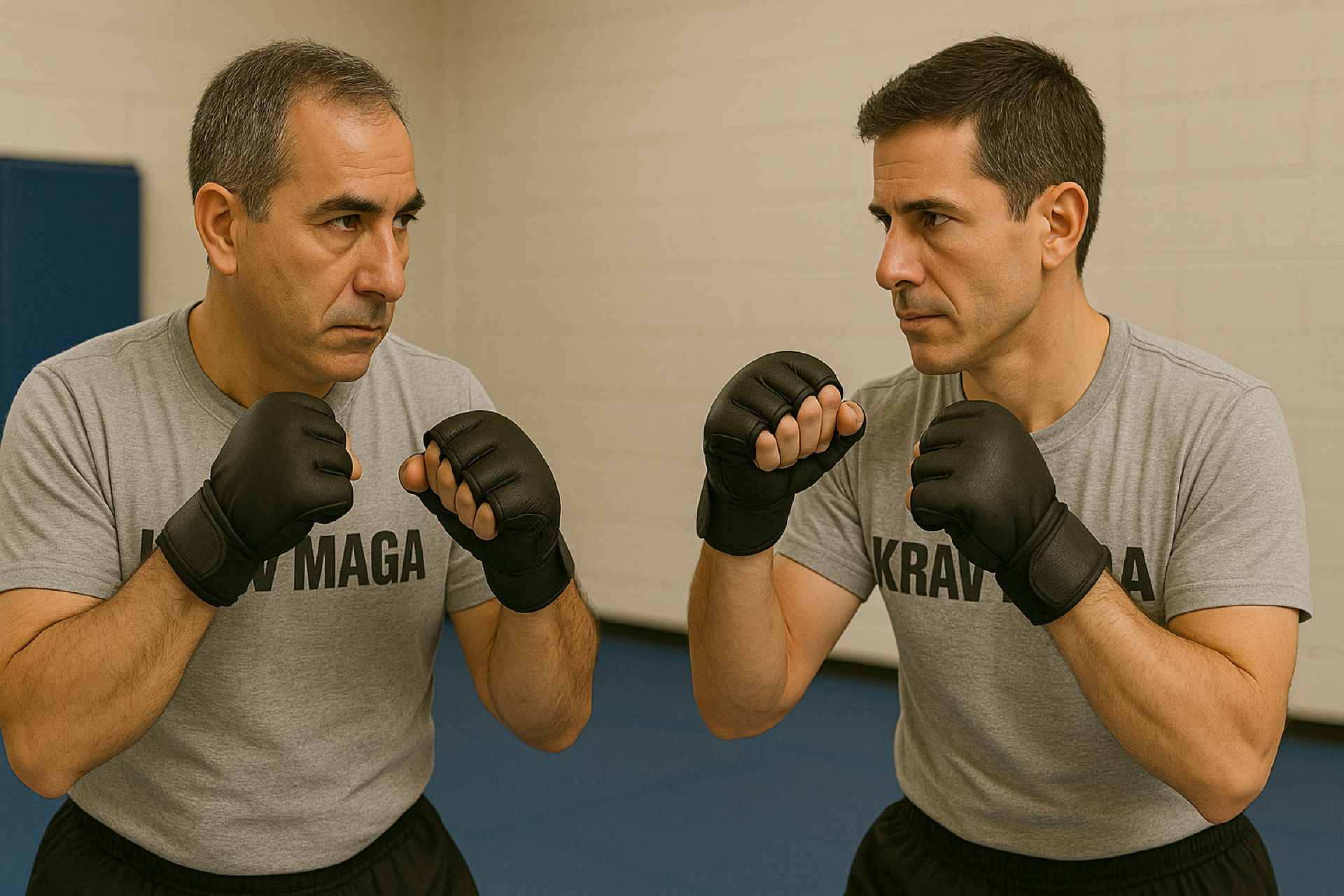Introduction to Krav Maga: The Art of Jewish Self-Defense
Krav Maga, which means “contact combat” in Hebrew, is more than just a martial art – it’s a comprehensive self-defense system developed for the Israel Defense Forces. This practical and efficient combat system emphasizes neutralizing threats quickly while promoting awareness and prevention.
Origins and History
Developed in the 1940s by Imrich Lichtenfeld (also known as Imi Sde-Or), Krav Maga combines techniques from boxing, wrestling, and other martial arts. Lichtenfeld initially developed the system to protect the Jewish community in Bratislava from fascist groups in the years leading up to World War II.
Core Principles
Neutralize the Threat
- Focus on ending the confrontation as quickly as possible
- Target vulnerable points
- Use natural movements and reactions
Defend and Counter Simultaneously
- Combine defensive and offensive movements
- Turn defense into attack
- Minimize exposure to danger
Use Natural Movements
- Build on instinctive responses
- Simple, efficient techniques
- Techniques that work under stress
Basic Techniques
Stance and Movement
The foundation of Krav Maga begins with a proper fighting stance:
- Feet shoulder-width apart
- Hands up protecting the face
- Chin slightly tucked
- Knees slightly bent
Common Defenses
360° Defense
- Protection against strikes from all angles
- Using forearms as shields
- Maintaining awareness of surroundings
Punch Defenses
- Inside defense against straight punches
- Outside defense against hooks
- Body defense against low strikes
Training Methods
Krav Maga training typically includes:
- Stress drills
- Multiple attacker scenarios
- Weapon defenses
- Situational awareness exercises
Benefits of Training
Physical Benefits
- Improved strength and conditioning
- Better coordination and reflexes
- Enhanced flexibility
Mental Benefits
- Increased confidence
- Better stress management
- Improved decision-making under pressure
Practical Benefits
- Real-world self-defense skills
- Situational awareness
- Risk assessment abilities
Getting Started
To begin your Krav Maga journey:
- Find a certified instructor
- Start with fundamentals
- Practice regularly
- Focus on proper technique before speed
Remember, Krav Maga is about more than just physical techniques – it’s about developing the mindset and awareness to avoid confrontations when possible and handle them effectively when necessary.
Conclusion
Krav Maga continues to evolve while maintaining its core principle: enabling practitioners to defend themselves and others effectively. Whether you’re interested in self-defense, physical fitness, or building confidence, Krav Maga offers a practical and comprehensive system for personal protection.
